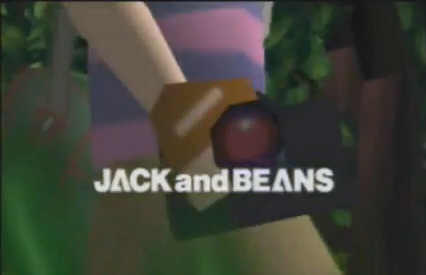Jack and the Beanstalk was a game being developed for the Nintendo 64 Disk Drive. It was originally advertised in February 1995, but was not heard of again until February 1998, when more details of the game’s development emerged. However, the game was never released, and very little is known about its specific operation.
Presumably this intriguing game was similar in plot or gameplay to the traditional fairy tale of Jack and the Beanstalk. Unfortunately, we will probably never know for sure.
As Jack slept, the beans germinated in the soil, and by morning a gigantic beanstalk grew in their place. When Jack saw the huge beanstalk, he immediately decided to climb it. He arrived in a land high up in the clouds that happened to be the home of a giant.
Jack and the Beanstalk was being developed on the second floor of the Nintendo Kanda building, under the supervision of HAL Laboratories, by a team of ten or more employees, lead by Youichi (Yoichi) Yamamoto. Yamamoto, originally a construction designer, was one of several non-video game-industry personnel selected to work on the project by a panel of four important Nintendo figures: Shigesato Itoi, Satoshi Iwata, Kouichi Nakamura and Shigeru Miyamoto himself. It is not clear why Nintendo specifically sought out professionals from other fields to work on Jack and the Beanstalk.
The game was slated as being a brand new type of video game, and one that utilised the features of the N64DD to their full extent. Although the game was never completed, many of its flagship features eventually found their way into different games, such as Pokémon Snap and EarthBound 64.
As we can read on Kotaku:
“Originally, Pokémon Snap for the Nintendo 64 system wasn’t a Pokémon game,” recalls Nintendo president Satoru Iwata, “but rather a normal game in which you took photos, but the motivation for playing the game wasn’t clear.” […] Game designer Masanobu Yamamoto was working on Pokémon Snap, and he initially had a negative reaction to the addition of Pokémon, because the characters replaced what he was working on. “That time, adopting the Pokémon world clarified what we should do and the direction we should head,” Yamamoto adds, “and I came to like Pokémon, so I felt like that had saved us.”
As noted by Andy, in the intro of Pokemon Snap, along with the “HAL”, “Nintendo” logos, we can see the text “Jack and Beans”:

From the credit list on Mobygames, JACK and BEANS seems to have been the name of the main team behind the game, which director was the same Yamamoto that lead the Jack and Beanstalk project:
JACK and BEANS
Director: Yoichi Yamamoto, Koji Inokuchi, Akira Takeshima
Designer: Shigezo Kawase, Takeyuki Machida, Masanobu Yamamoto, Shizu Higashiyama
Other possible features that were taken from Jack and the Beanstalk, could have been evolved in EarthBound 64 (a game that was also cancelled), as the N64DD’s internal clock was to be used to allow the real-time growth of planted in-game seeds. This mechanic seems to stem (excuse the pun) from Jack and the Beanstalk. It is also likely that the 3-day system system used in The Legend of Zelda: Majora’s Mask is similar to how time would have been used in Jack and the Beanstalk. It is listed under “Simulation” in various N64 unreleased listings, which supports the idea of the player growing his or her own seed or seeds.
Thanks to Redstar and Celine for the contributions!
Sadly there are no images of Jack and the Beanstalk preserved for now.
Video documentario (in Italian):
